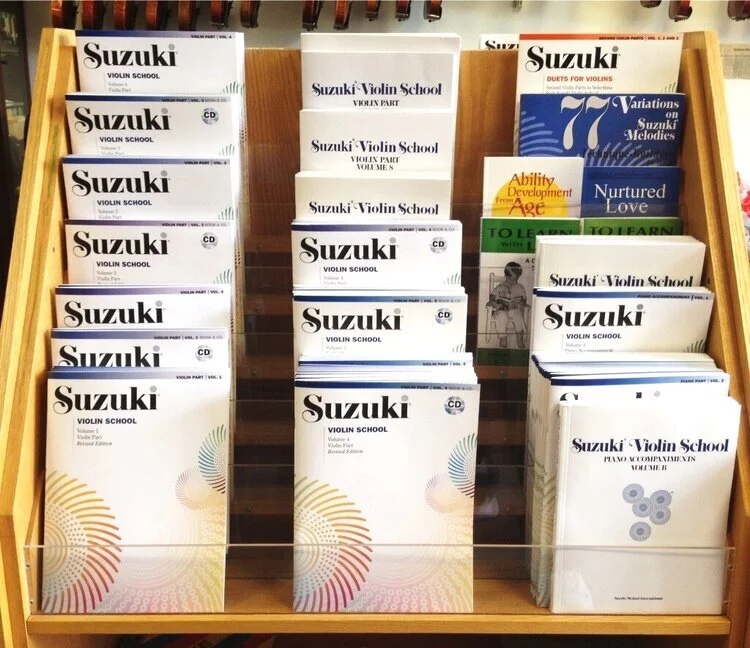Suzuki Piano Method: Music Lessons For Young Children
Learning Piano the Suzuki Way
Suzuki piano method is one of many teaching methods and philosophy available to children starting their musical education. This method method of teaching piano is based on the “mother tongue” approach. Children are taught music as if they were being immersed in a foreign language. They are exposed to music, learning to listen to the piece before any attempt at reproducing the song is made. Sight reading music is not taught until the child is successful with reproducing music by ear.
Parents must make a commitment with this method and their involvement is vital. Parents are required to also attend the lesson and the teacher may teach both the parent and child when the child is very young. Parents may even be expected to play during some lessons.
Parents will be expected to play the recorded music at home, and should take notes during practice times to effectively communicate any difficulties and successes with the teacher.
Parents should also sing to the child frequently – even if the voice quality is off-key, children learn by listening and will develop a basic ear for music. Singing is the most important first step in training the ear for music.
Suzuki piano books are sets of music, increasing in difficulty as the child increases in skill level. Volume 1 contains songs like “Lightly Row” and “London Bridge.” The books come with a listening CD so the child can hear the song played and reproduce what they hear. There are seven volumes in total.
Benefits of the Suzuki Method
Children do not need to read to play the Suzuki method. Since Suzuki is taught by listening and developing an ear for music, being able to read music is not necessary for beginning piano students.
Since children do not need to sight read music, this method allows children to begin lessons at a younger age than other piano teaching methods. Many children begin learning to play piano at the age of three years (or younger)!
Since children learn to play music “by ear,” they learn to play music with feeling. Music does not sound mechanical or halting as a child tries to decipher sheet music.
Children obtain a feeling of success early on in the process, as the Suzuki books teach the children to play real songs right away. Meaningless scales and finger exercises are avoided.
The positive environment and reinforcement used with the Suzuki method makes playing a joyful event rather than a chore.
Criticism of the Suzuki Method
The most common criticisms heard regarding the Suzuki approach are:Children do not learn to read music in the beginning.
Children do not develop good technical skills.
These criticisms often stem from myths surrounding the Suzuki technique.
While the Suzuki method does not rely on sight-reading initially, nearly all studios teach sight reading as the child progresses through the various levels. Parents should verify that a Suzuki teacher does teach sight reading by a certain level – many studios begin teaching children to read music once they have completed the first book.
If the parents do not participate as they should, a child may not develop the appropriate technical skills. Uninvolved parents should not choose the Suzuki approach, as the child requires frequent parental encouragement and help to remain successful with this method.
When Can Children Start Suzuki Piano?
Children can begin learning the Suzuki method as young as two years of age. By the age of five, all children would be considered “ready” to start learning the Suzuki method. The biggest factor in determining readiness is the parent’s willingness to teach their child. The child should also express a desire to learn the piano, and the entire atmosphere should be kept light and positive for young children.
A Brief History of the Suzuki Method
Shinichi Suzuki was born in Japan, but moved to Germany in the 1920’s. He was teaching university students the violin, but became more and more fascinated with teaching young children.
He noticed that very young children learn languages with amazing ease – they simply had to be exposed to it, and they would learn to understand and speak a language. Using this basic philosophy, he developed his approach to teaching music to young children. The Suzuki method was originally called the “Mother-Tongue Method” or “Talent Education.”
When World War II broke out, Suzuki’s lessons were halted for a period of time. Once the war ended, he began teaching students again in Motsumoto, Japan. The method spread to the United States in 1958, when a student at Oberlin college showed a film of Suzuki’s method to American violin teachers. Duly impressed, the teachers began to learn more about this unique method of teaching music to very young children.
Suzuki’s main goal was not to create simple musicians but to create better citizens of the world. An oft-repeated quote is:
“If a child hears fine music from the day of his birth, and learns to play it himself, he develops sensitivity, discipline and endurance. He gets a beautiful heart."
The Suzuki method is currently used to teach many different instruments, including violin, guitar, and piano.
